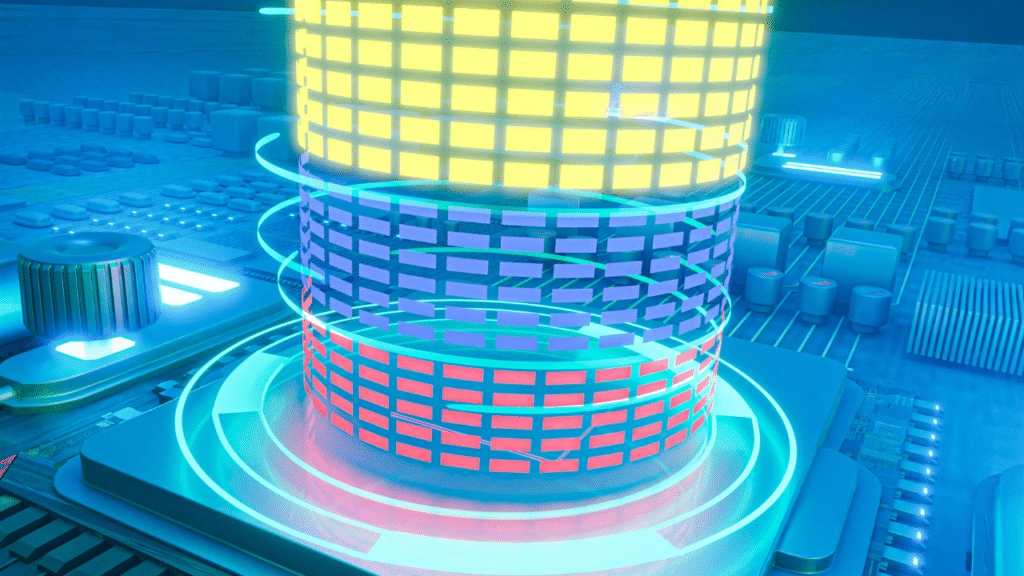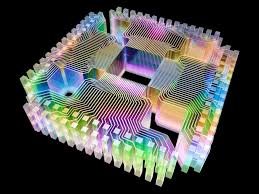In the fascinating world of quantum computing, there’s one key player that’s rewriting the rules of how we process information: the qubit. Unlike the classical bits in your laptop or smartphone, qubits in quantum computing operate in strange but powerful ways, thanks to principles like superposition and entanglement.
This blog will walk you through what qubits are, how they function, and why they’re considered the building blocks of the future. We’ll also explore how concepts like quantum gates and entanglement empower qubits to perform tasks that classical bits simply can’t.
Let’s break the binary barrier and see why qubits in quantum computing are so revolutionary.
What are Qubits?
Let’s start with the basics.
In traditional computing, the smallest unit of data is the bit, which can be either a 0 or a 1. All digital information—your photos, texts, and apps—is made up of combinations of these two values.
Now, imagine if a computer bit could be both 0 and 1 at the same time—that’s essentially what a qubit is.
A qubit (short for quantum bit) is the quantum version of a classical bit. But instead of being limited to just two states, it can exist in a superposition of both. This ability allows qubits in quantum computing to process information in vastly more complex and efficient ways than traditional bits.

Superposition: One Qubit, Many Possibilities
The first mind-bending concept in quantum computing is superposition.
While a classical bit must choose between 0 or 1, a qubit can be in a state that’s a blend of both. Think of a coin spinning in the air—it’s not just heads or tails; it’s kind of both until it lands.
In mathematical terms, a qubit's state is described using complex probability amplitudes, allowing it to exist in any combination of 0 and 1. This enables qubits in quantum computing to hold and process exponentially more information than classical bits.
And here’s the kicker: with each added qubit, a quantum computer’s power doubles. That’s why even a few dozen qubits can outperform the most powerful classical machines in certain tasks.
Entanglement: Quantum Teamwork at Its Best
If superposition is what gives qubits their individual power, entanglement is what makes them work together in spectacular ways.
Entanglement is a uniquely quantum phenomenon where two or more qubits become linked, such that the state of one qubit is directly connected to the state of another—no matter how far apart they are.
This strange connection allows for ultra-fast communication and coordination between qubits, enabling powerful parallel processing. In short, entangled qubits don’t just work side-by-side—they work as a unit, creating complex, high-speed calculations that classical systems can’t match.
For qubits in quantum computing, entanglement is the secret sauce that enables breakthroughs in everything from cryptography to drug discovery.

Quantum Gates: The Tools That Shape Qubit Behavior
Just like classical bits are manipulated by logic gates (AND, OR, NOT), qubits are manipulated by quantum gates. These gates control the behavior of qubits, allowing them to perform operations essential to quantum algorithms.
But while classical gates deal with definite 0s and 1s, quantum gates must handle qubits in superposition and entanglement. That means quantum gates are rotations and transformations of a qubit’s state in a complex mathematical space.
Some commonly used quantum gates include:
- Hadamard Gate (H): Puts a qubit into superposition
- Pauli Gates (X, Y, Z): Flip and rotate qubit states
- CNOT Gate: Creates entanglement between two qubits
- Toffoli Gate: A quantum equivalent of a classical “AND” logic gate
Together, these quantum gates form the building blocks of all quantum algorithms. They allow quantum computers to run complex routines such as Shor’s algorithm (for factoring large numbers) and Grover’s algorithm (for searching unsorted databases efficiently).
Real-World Impact of Qubits in Quantum Computing
The power of qubits in quantum computing isn’t just theoretical—it’s starting to show real promise across many industries.
1. Drug Discovery & Molecular Modeling
Simulating molecules at the quantum level is nearly impossible for classical computers. But qubits, thanks to their quantum nature, can model molecular interactions accurately, potentially leading to faster drug discovery and customized treatments.

2. Cybersecurity & Encryption
Quantum computers powered by entangled qubits could break today’s most advanced encryption methods. But they also offer quantum cryptography, which provides unhackable communication thanks to quantum mechanics.
3. Climate and Environmental Modeling
Complex systems like the Earth’s climate require massive simulations. Qubits in quantum computing could process these scenarios faster and more accurately—helping us develop more effective climate strategies.
4. Supply Chain & Logistics
Optimization problems, like planning delivery routes or managing inventory across global markets, can be tackled faster using quantum algorithms driven by qubits.
Challenges of Using Qubits
As promising as qubits in quantum computing are, they come with some big challenges.
1. Stability and Decoherence
Qubits are very delicate. Even tiny vibrations or temperature changes can cause them to lose their quantum state—something called decoherence. That’s why many quantum computers are kept near absolute zero in special chambers.
2. Error Correction
Because of decoherence and noise, quantum computers make errors much more frequently than classical ones. Creating reliable quantum error correction systems is one of the biggest technical challenges in the field.
3. Cost and Complexity
Building and maintaining quantum systems is expensive and complicated. We’re still in the early stages, and mass production of stable qubit systems remains a major hurdle.
Despite these challenges, the race to build practical quantum machines is accelerating—thanks to companies like IBM, Google, Intel, and many startups.

What’s Next for Qubits?
The future of qubits in quantum computing is exciting. Here’s what we can expect in the next few years:
- More qubits with less noise: Researchers are working on improving qubit coherence times and reducing errors.
- Scalable quantum processors: Moving from 50–100 qubits to thousands or millions, unlocking real-world quantum advantage.
- Hybrid computing models: Combining classical and quantum processors for tasks like machine learning and data modeling.
- Quantum cloud platforms: Making quantum processing accessible via cloud services for universities and businesses.
As these advances unfold, qubits will continue to break barriers—and bring quantum computing into the mainstream.
Final Thoughts
The journey of qubits in quantum computing is just beginning, but its impact is already being felt across science, industry, and innovation. With the power of superposition, entanglement, and quantum gates, qubits are breaking the limitations of classical computing and opening up a new frontier of possibilities.
From revolutionizing drug development to creating unbreakable encryption and optimizing global systems, qubits are the tiny building blocks of a very big future.
So, the next time someone mentions qubits, you’ll know: they’re not just 0s and 1s. They’re the quantum force changing the world of computing—one entangled bit at a time.







